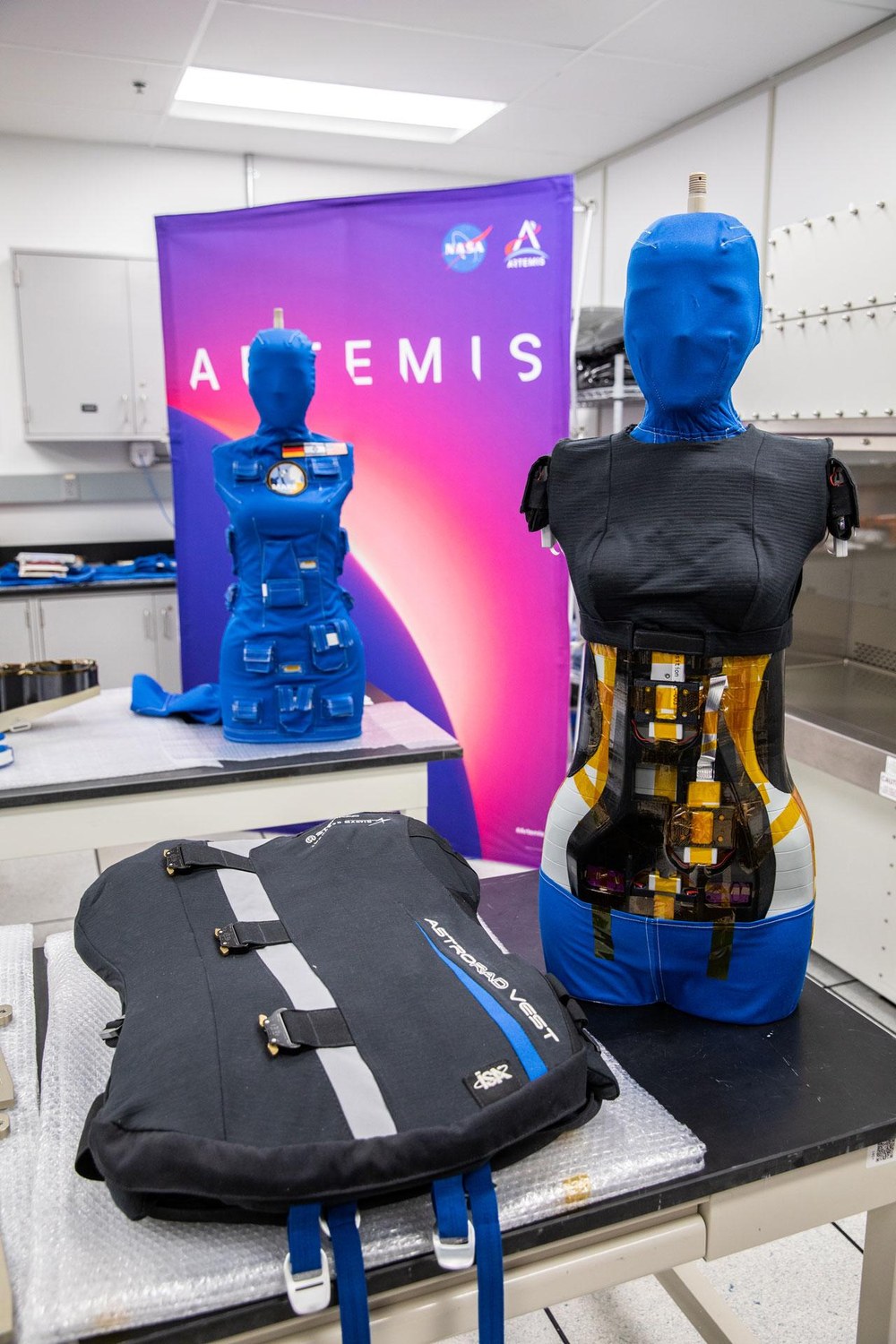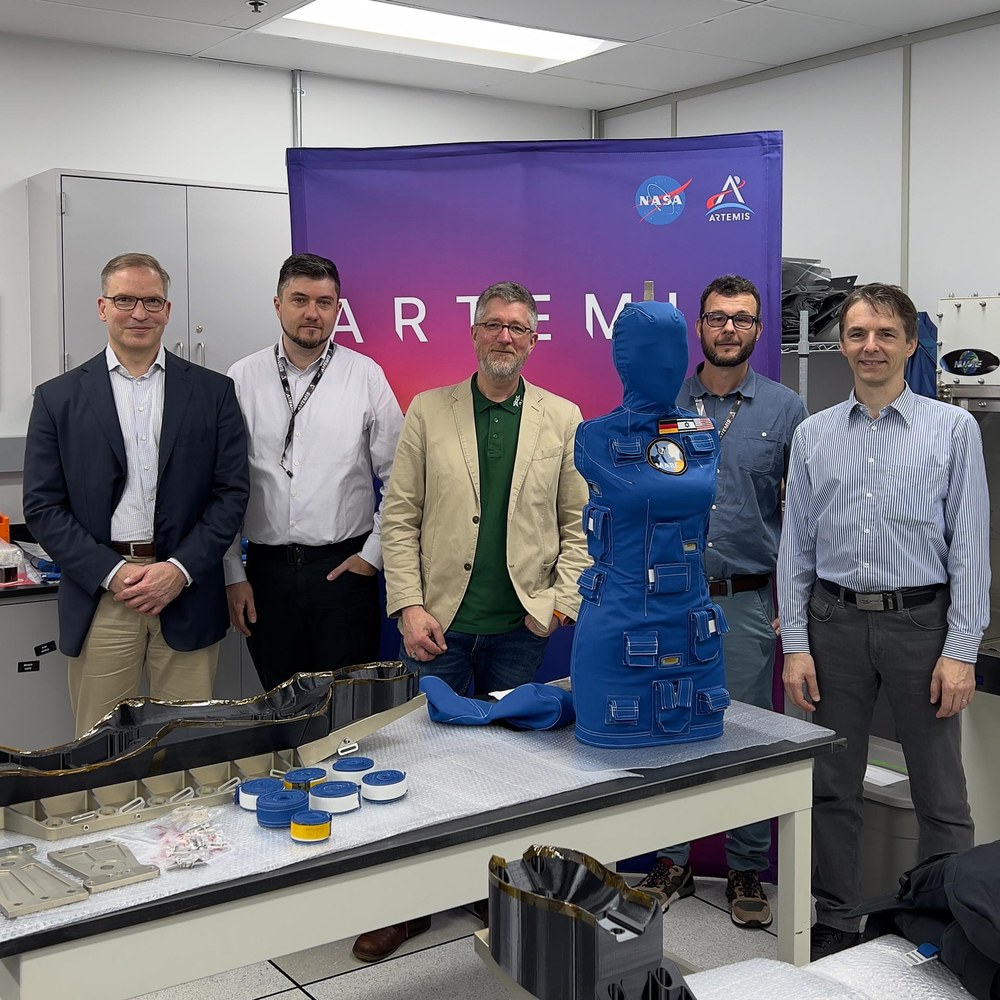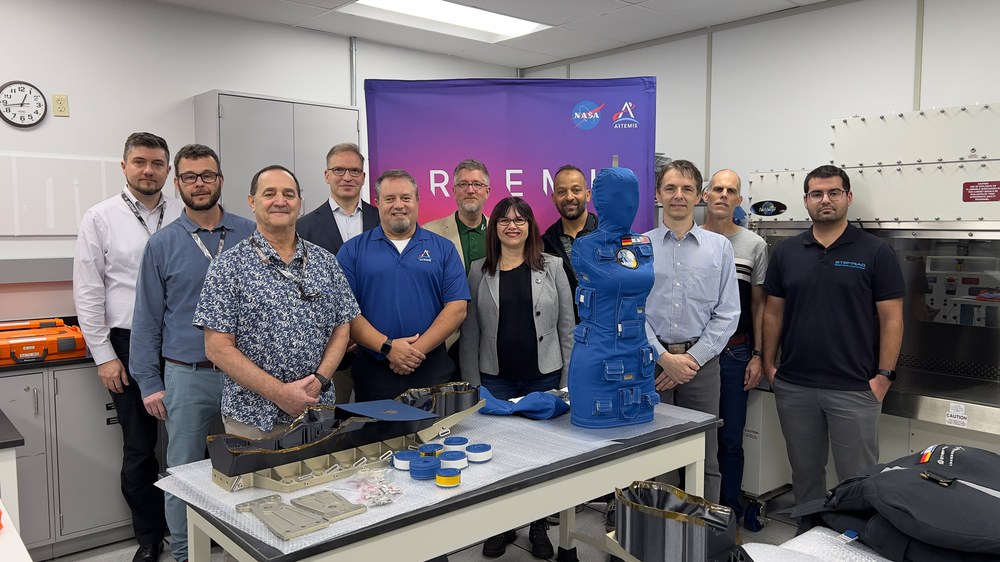NASA hands over female 'astronaut' phantoms safe and sound after flight to the Moon

NASA


- The MARE project was the first to successfully measure the radiation exposure experienced by the female body during a flight to the Moon and back.
- The data acquired during the mission will provide a three-dimensional image of the human body, showing the amount of radiation exposure on bones and organs at different locations during a lunar flight.
- Focus: Spaceflight, exploration, Moon, cosmic radiation, international cooperation
It was a historic journey. As part of NASA's Artemis I mission, the Orion spacecraft, powered and supplied by the European Service Module (ESM), flew to the Moon and back for the first time. On board were the two female astronaut phantoms, Helga and Zohar – part of the first experiment conducted in space to measure the radiation exposure to which the female body is exposed during such a flight. Following the successful landing of the Orion capsule in the Pacific Ocean on 11 December 2022, NASA has now handed over both measuring mannequins to the MARE research team, led by the German Aerospace Center (Deutsches Zentrum für Luft- und Raumfahrt; DLR), at Kennedy Space Center. The initial evaluation of the measurement data is currently taking place on site. Helga and Zohar are expected back at DLR's site in Cologne in February.
"We are happy and proud that Helga and Zohar have returned safely and with a treasure trove of data," says Jens Jordan, Director of the DLR Institute of Aerospace Medicine, who received the astronaut 'phantoms' together with the research team on behalf of DLR. "Now we are looking forward to conducting a detailed study of the radiation measurements acquired at distances of up to more than 400,000 kilometres from Earth."
Thirty-eight slices and replicated organs
Helga and Zohar measured the radiation levels over the entire mission until landing. The two astronaut 'phantoms' are modelled on female bodies including reproductive organs, so that the radiation dose can also be measured for the organs that are particularly sensitive to radiation. The two mannequins each consist of 38 slices, are 95 centimetres tall, weigh 36 kilograms and contain organs and bones of different densities made of plastic. Zohar, provided by the Israeli Space Agency (ISA), weighs as much as 62 kilograms when equipped with the additional AstroRad radiation waistcoat from the company StemRad.
"We are examining DLR's active radiation detectors directly here at Kennedy Space Center and reading out their measurement data," says MARE project manager Thomas Berger from the DLR Institute of Aerospace Medicine. "We already have excellent data spanning the first to the last minute of flight, which lasted more than 25 days. Helga and Zohar did an excellent job on their journey to the Moon! However, the detailed data evaluation must now follow."
A total of 18 active detectors from NASA (CADs) and 16 active detectors from DLR (M-42) were installed in the interior and on the surface of both mannequins. These detectors measured the radiation dose experienced over the entire flight in by parts of the body including the most radiation-sensitive organs – the lungs, stomach, uterus and bone marrow. The phantoms are also equipped with more than 12,000 passive radiation detectors made of small crystals spread out all over the mannequins. Reading out the crystals creates a three-dimensional image of the human body that reveals the total radiation exposure experienced by different bones and organs during a flight to the Moon and back. The experiment is also exploring how much shielding was provided by the radiation vest worn by Zohar. This complex evaluation will be carried out primarily at DLR in Cologne, with contributions from the laboratories of the NASA project partners and international universities.
The #LunaTwins are scheduled to return to the DLR Institute of Aerospace Medicine in February.

Related links:
The MARE experiment
The German Aerospace Center (DLR) is leading the MARE experiment. The main project partners are the Israeli Space Agency (ISA), the Israeli industrial partner StemRad, which developed the AstroRad protective waistcoat, as well as Lockheed Martin and NASA. MARE, in its complexity and in its international collaboration with numerous universities and research institutions from Europe, Japan and the USA, represents the largest experiment to determine radiation exposure for astronauts that has ever left low-Earth orbit. The measurements taken during Artemis I will provide valuable risk data for risk assessment and mitigation for future exploration missions and enable safe human exploration of space.
